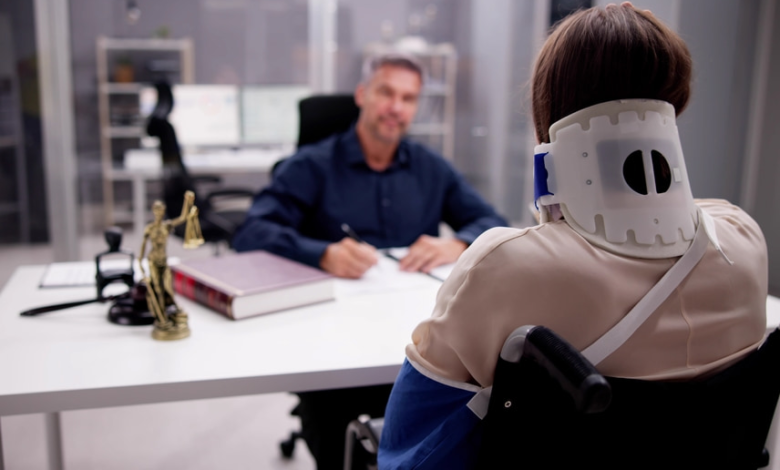Committed a Hit and Run? Here’s How Long It Takes Police to Find You

When someone flees the scene of an accident—leaving property damage, injury, or worse behind—it’s natural to wonder: how much time for a hit and run before the police catch up. Many factors affect the speed and outcome of hit‑and‑run investigations, and while there’s no universal timeline, understanding what law enforcement looks for and how these investigations unfold can make a difference. McMinn, Logan, Gray PLLC handles these legal issues and helps individuals understand their rights (and risks) when involved in a hit‑and‑run.
What Is a Hit and Run (Legally Speaking)
A hit‑and‑run occurs when a driver involved in a collision fails to stop, give identifying information, or render required assistance under the law. Depending on state statutes and the severity of the damage or injury, hit‑and‑run offenses can be misdemeanors or felonies. These distinctions matter for how aggressively police will pursue the case, how long evidence is preserved, and what penalties may apply.
Key Factors That Influence How Quickly Police Find You
There’s no set deadline for how fast law enforcement will locate a driver who committed a hit‑and‑run. But investigations tend to move faster (sometimes in hours or days) when certain conditions are met. When those conditions are lacking, it might take weeks, months—or the case may never be resolved.
Here are the main factors that affect how long it might take:
- Quality of Evidence at the Scene
- If there are surveillance cameras that captured the incident or traffic cams nearby, those can provide identifying details quickly.
- Witness statements, photos of the damage, vehicle parts left behind, skid marks, paint transfers—all of these help.
- If there are surveillance cameras that captured the incident or traffic cams nearby, those can provide identifying details quickly.
- Vehicle Description and License Plate Info
- The more precise the description (make/model, color, license plate), the faster investigators can trace the vehicle.
- Without a license plate, matching a partial description slows things dramatically.
- The more precise the description (make/model, color, license plate), the faster investigators can trace the vehicle.
- Severity of the Incident
- Injuries or fatalities tend to trigger more resources and urgency from law enforcement.
- Even property damage can receive prompt attention, especially if the incident involves public or government property.
- Injuries or fatalities tend to trigger more resources and urgency from law enforcement.
- Speed and Accuracy of Reporting
- If the victim, witnesses, or bystanders report the incident immediately, police have a better chance to collect evidence before it disappears.
- Delay in reporting can degrade evidence or make leads disappear (witnesses forget, surveillance footage is overwritten).
- If the victim, witnesses, or bystanders report the incident immediately, police have a better chance to collect evidence before it disappears.
- Law Enforcement Resources and Priorities
- In busy jurisdictions, police might have many cases, meaning lower priority cases can take longer.
- Departments with more resources (forensics, tech, specialized units) may solve cases more quickly.
- In busy jurisdictions, police might have many cases, meaning lower priority cases can take longer.
- Technological Tools
- License plate reader systems, traffic cameras, dash cams, cell‑phone video, and even social media tips can help investigators trace suspects.
- Data aggregation across jurisdictions (if the suspect flees area or state) can also speed up discovery.
- License plate reader systems, traffic cameras, dash cams, cell‑phone video, and even social media tips can help investigators trace suspects.
Possible Timelines
While every case is different, below are rough ranges of how long police often take under different scenarios. These estimates are not guaranteed but reflect what is seen in many hit‑and‑run cases.
| Scenario | Typical Time‑Frame | Key Delays or Accelerators |
| Clear evidence + license plate + serious injury | Hours to a few days | Rapid identification, strong urgency by police |
| Moderate damage/property only + good description | Few days to weeks | Waiting on witness interviews, checking cameras |
| Poor description + no plate + minimal evidence | Weeks to months | Might require tips, forensic analysis, or luck |
| Suspect leaves state or jurisdiction involved | Months or longer | Cross‑jurisdictional coordination slows things down |
| Minimal reporting or delayed reporting | Case may remain unsolved | Evidence lost, memory fades, cameras overwritten |
Statutes of Limitations & Legal Timelines
While this post focuses on how quickly police might locate a hit‑and‑run driver, it’s also important to consider how long legal action can be taken—statutes of limitations vary depending on state, severity, and whether injury or fatality is involved. Some jurisdictions allow crimes with serious injury or death to be charged for several years; others for misdemeanors have shorter windows.
Knowing the statute of limitations is vital—cases can be closed or dismissed if the legal timeframe has passed. The presence of new evidence, discovery of suspect identity, or other tolling factors might extend deadlines in some cases.
See also: When Business Partnerships Break Down, Legal Counsel is Essential
What Happens If You’re the Victim vs. the Suspected Driver
- For victims: Prompt reporting, preserving evidence (photos, witness info), and following up with law enforcement can drastically improve the chances the suspect is found.
- For those who committed a hit‑and‑run: The risks of getting caught are significant—modern investigative tools, license plate readers, traffic cameras, and witness reports all work in favor of law enforcement. Trying to “lay low” may delay discovery, but it rarely prevents it altogether.
Why Legal Help Matters
Hit and run cases can be complicated:
- Officers need to follow procedure properly; any lapse may affect admissibility of evidence.
- If you are accused, having an attorney can help protect rights, advise on how to respond to law enforcement, or negotiate lesser charges if circumstances permit.
- If you’re the victim, legal counsel can assist you in recovering damages, including property damage, medical expenses, and in some states pain and suffering.
McMinn, Logan, Gray PLLC has experience dealing with hit‑and‑run investigations and defense. Whether someone is trying to understand how “how much time for a hit and run” really means in their case, or is facing charges or civil claims, legal guidance can help clarify next steps.
Facing the Reality
There’s no one‑size‑fits‑all answer to how long it takes for police to find someone after a hit‑and‑run, but the timeline usually depends on the strength of evidence, severity of the crash, and how quickly things are reported. The more information available quickly (license plate, witness statements, video footage), the faster the investigation tends to proceed.
If someone is concerned about a hit‑and‑run—whether as a victim or someone under suspicion—it’s wise to get legal advice as soon as possible. For those seeking guidance on hit‑and‑run outcomes, the page on how much time for a hit and run at McMinn, Logan, Gray PLLC can help with detailed information tailored to the situation.







